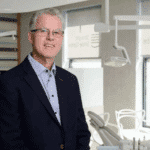CS Model+ 5 features advanced algorithms and artificial intelligence to allow orthodontic practices to design aligners in-office, as well as tools that allow the clinician to automate much of the case.
Carestream Dental has launched the latest version of CS Model+ v5. With its advanced algorithms and artificial intelligence (AI), it allows practices to design clear aligners right in the office. Moreover, the latest update includes features such as “degree of difficulty” case ranking; automatically generated intermediate treatment steps; IPR suggestions; and a library of attachments.
According to the company, CS Model+ 5 allows for more straightforward treatment planning decisions as CS Model+ v5 uses AI to rank a case’s degree of difficulty. The case complexity index is an exclusive feature to CS Model+ v5 that guides doctors through the level of difficulty of the case with an easy-to-understand color code system, from green (simple and straightforward) to red (outside the clinically proven capabilities of aligners). For teeth that are indicated as more difficult, doctors can reportedly take a deeper dive and obtain more details about the case situation for greater insight.
Since patients don’t always understand why they wouldn’t be a good candidate for aligners, the color-coded teeth on the virtual model is designed to make it easier for clinicians to explain why more conventional methods might be necessary. If the patient is a good candidate, CS Model+ 5 lets the clinician play a video that shows their treatment progressing through the steps.
“Patients have come to expect a certain level of customization and convenience everywhere they go, including their doctor’s office,” said Ed Shellard, DMD, chief dental officer at Carestream Dental. “Clear aligners are one way clinicians can offer that ‘bespoke’ service that patients are seeking; they love that it’s their teeth they see moving on the screen and how quickly they can start treatment—sometimes same day.”
According to Carestream Dental, what makes this latest version of CS Model+ unique is its ability to automate much of the case, reducing manual input from the clinician. For example, if interproximal reduction (IPR) below 0.2 mm per side is indicated at the beginning of treatment, the software automatically manages the first step. If the amount of space needed exceeds 0.2 mm per side, or if the clinician prefers to perform interproximal reduction later, the IPR table can be modified and the steps will automatically be regenerated.
The software also automatically generates intermediate treatment steps based on clinician-indicated constraints, so there’s no need to manually create each individual step. From there, an editable gallery lets clinicians preview models and the complexity of each step, so they have absolute clarity and confidence about the case.
Should attachments be needed for a clear aligner case, CS Model+ v5 provides a library of attachments with different options for rotation, extrusion-intrusion, torque or even combined movements. A single click on a tooth and the attachment is automatically placed in the center and can be moved or modified as needed. While automation reportedly is a key part of the update to CS Model+, clinicians remain in full control and can place or remove attachments at any stage of the treatment process.
Once the case is ready, doctors can choose to have designs sent to a lab or print in-house with any third-party FDA approved 3D printer. 3D Systems, SprintRay, RapidShape, and Formlabs printers are all validated for use with CS Model+ to fabricate aligners in-house.
CS Model+ v5 is part of Carestream Dental’s CAD/CAM portfolio, CS Solutions.









